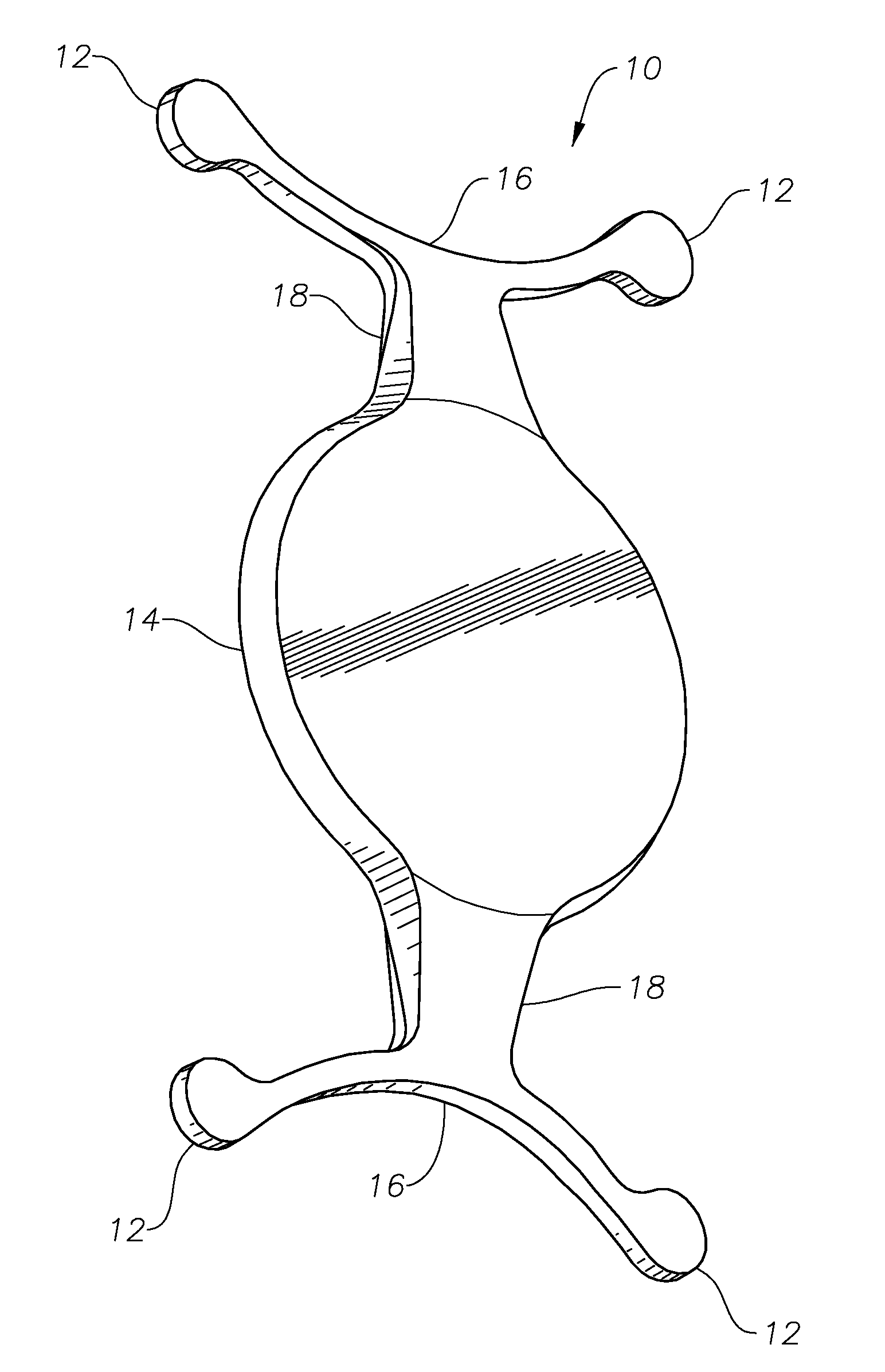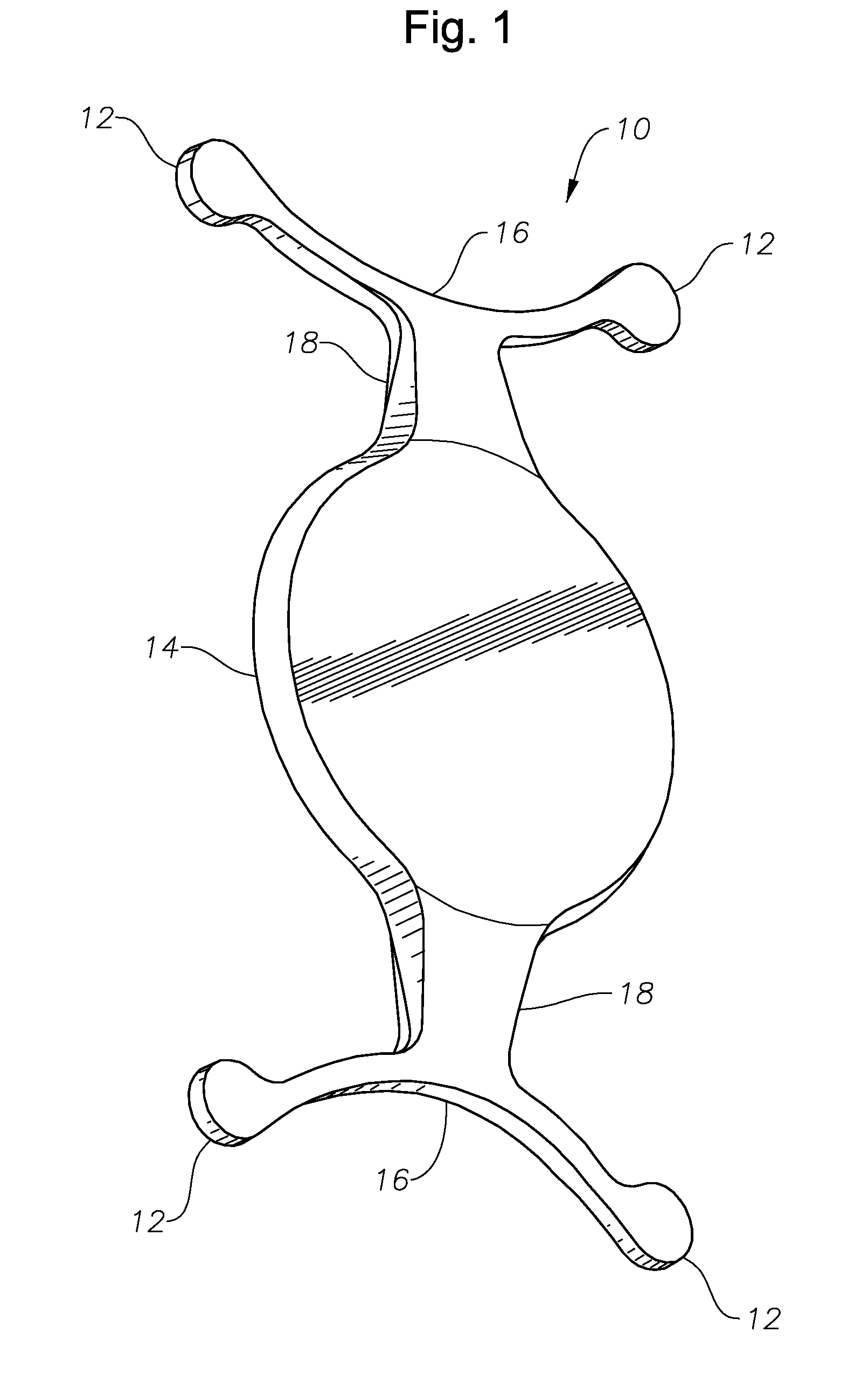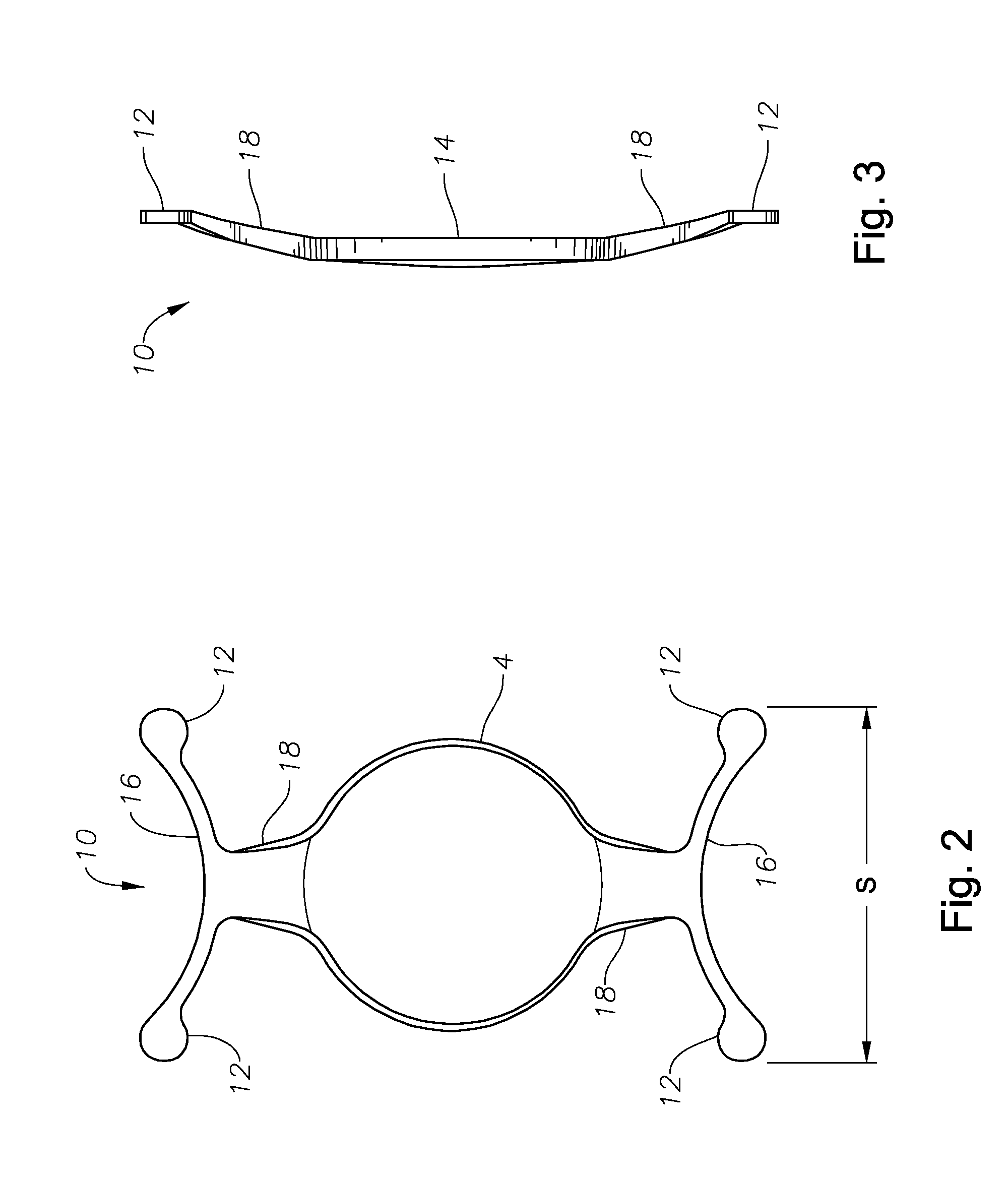Stable Anterior Chamber Phakic Lenses
- Summary
- Abstract
- Description
- Claims
- Application Information
AI Technical Summary
Benefits of technology
Problems solved by technology
Method used
Image
Examples
Embodiment Construction
[0023]Prior art anterior chamber lenses have generally been made from polymethyl methacrylate (PMMA), which is a relatively hard thermoplastic. Prior to the present invention, a certain amount of rigidity was believed necessary to maintain stability of the implant in the anterior chamber. See also U.S. Pat. No. 6,228,115 (Hoffmann, et al.), the entire contents of which being incorporated herein by reference, wherein a stiffening element is added to the haptic to achieve the desirable stability of the lens. The inventors of the present invention have discovered that the compressive forces of PMMA anterior chamber lenses is far in excess of what is required for stability. Recent advances in biocompatible materials makes it possible to construct anterior chamber lenses from soft materials such as silicones, hydrogels and soft acrylics. With these softer materials, there is some question as to the stability of the implant in the anterior chamber. The inventors of the present invention h...
PUM
 Login to View More
Login to View More Abstract
Description
Claims
Application Information
 Login to View More
Login to View More - R&D Engineer
- R&D Manager
- IP Professional
- Industry Leading Data Capabilities
- Powerful AI technology
- Patent DNA Extraction
Browse by: Latest US Patents, China's latest patents, Technical Efficacy Thesaurus, Application Domain, Technology Topic, Popular Technical Reports.
© 2024 PatSnap. All rights reserved.Legal|Privacy policy|Modern Slavery Act Transparency Statement|Sitemap|About US| Contact US: help@patsnap.com










